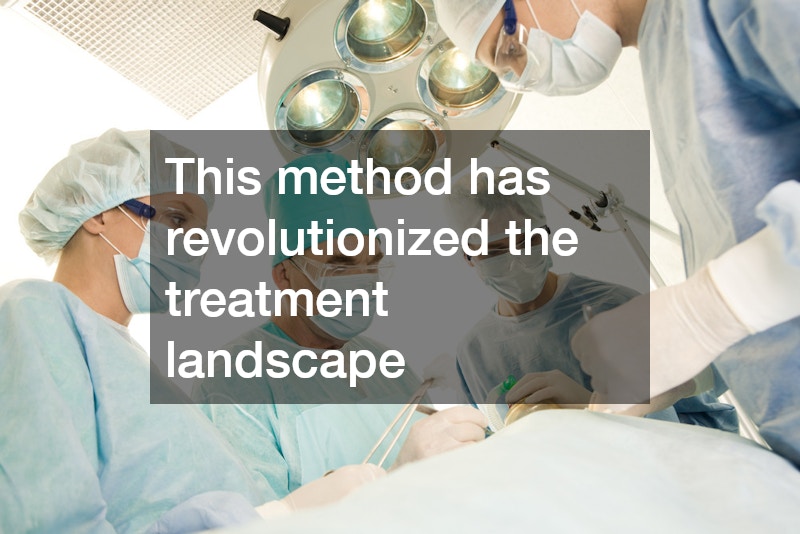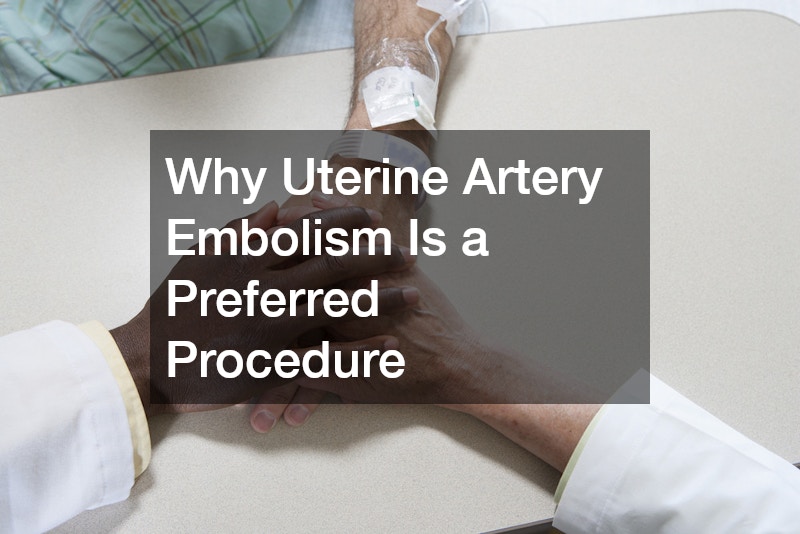The minimally invasive procedure of uterine artery embolism (UAE) has garnered recognition in the medical field as an effective treatment for several gynecological conditions, particularly fibroids and abnormal uterine bleeding. This procedure, minimally invasive in nature, has transformed the landscape of women’s health by offering an alternative to traditional surgical interventions such as hysterectomy. As a result, UAE has emerged as a preferred option for many practitioners and patients alike, emphasizing its significant role in providing relief from symptoms while preserving women’s reproductive systems.
Over the years, the advancements in imaging techniques and interventional radiology have improved the efficacy and safety of UAE, making this procedure increasingly popular. The delicate manipulation of blood flow to the uterus allows for targeted treatment, leading to a substantial reduction in symptoms without the risks often associated with open surgeries. Thus, understanding the underlying mechanism, benefits, and patient selection criteria is crucial for health practitioners offering this option.
This article will delve into the intricacies of uterine artery embolism, exploring its purpose, procedural details, candidate criteria, potential risks, and advantages over traditional approaches. As we unfold each of these aspects, we aim to highlight why UAE has secured its position as a dominant procedure in contemporary gynecological practice.
What Is Uterine Artery Embolism?
Uterine artery embolism is a minimally invasive interventional radiology procedure aimed at treating conditions such as uterine fibroids, adenomyosis, and abnormal uterine bleeding. By selectively blocking the blood vessels supplying blood to these areas, the procedure effectively shrinks fibroids and alleviates bleeding, leading to significant clinical improvement. This method has revolutionized the treatment landscape by providing a less invasive alternative to hysterectomy.
The fundamental intention of UAE is to minimize the blood supply to the uterine tissues that cause discomfort and health issues, leading to rapid symptom relief. As fibroids are highly vascularized, reducing blood flow to these lesions can significantly hasten their reduction in size and the associated symptoms. The advancements in UAE have made it one of the go-to procedures for gynecologists and interventional radiologists.
UAE is particularly suitable for women who wish to preserve their uterus/ability to conceive, as it does not involve the removal of any organs. Therefore, understanding the conditions UAE addresses is critical for both practitioners and patients contemplating their options for symptom management in gynecological health.
How Does Uterine Artery Embolism Work?
The UAE procedure begins with a radiologist accessing the femoral artery through a small incision, usually in the groin area. Using fluoroscopy, a real-time imaging technique, the physician navigates a catheter through the arterial system to the uterine arteries. Once the catheter is in place, small particles—embolic agents—are injected into the arteries, effectively blocking blood flow to the targeted areas.
This obstruction reduces the blood supply to the uterine fibroids, leading to ischemia and subsequent shrinkage of these growths. The entire procedure is generally performed under mild sedation and local anesthesia, allowing for a relatively comfortable experience for the patient with decreased recovery time. Typically, the procedure lasts between 30 to 90 minutes, depending on the complexity of the case.
After the embolization, patients are monitored for a few hours and may be discharged on the same day. Though some cramping and discomfort are expected afterward, these symptoms are manageable. The rapidity of recovery is a significant advantage, allowing individuals to return to their daily activities within a short period, unlike traditional surgeries that often require prolonged recuperation.
What Are the Advantages of Uterine Artery Embolism?
The most notable advantage of uterine artery embolism is its minimally invasive nature. Unlike open surgeries such as a hysterectomy, which involve larger incisions, UAE only requires a small puncture in the skin. This results in decreased pain, a lower risk of complications, and significantly shorter hospital stays.
In addition to its minimally invasive approach, UAE is famed for its quicker recovery times. Many patients find that they can return to their normal activities within a few days, which is a stark contrast to the weeks of recovery often associated with traditional surgery. This expedience in recovery not only benefits patients physically but also offers psychological and emotional advantages by minimizing disruption to their daily lives.
Moreover, UAE has demonstrated a lower complication rate when compared to traditional surgical interventions. Issues such as excessive bleeding, infection, and long recovery times are notably reduced, making it a safer option for many women seeking treatment for fibroids or other related conditions. This combination of benefits, alongside high satisfaction rates among patients, highlights why UAE is becoming a preferred procedure in the field of gynecology.
Who Is a Suitable Candidate for Uterine Artery Embolism?
Ideal candidates for uterine artery embolism are women suffering from symptomatic uterine fibroids or other related conditions who wish to avoid major surgery. Typically, UAE is recommended for individuals who are experiencing heavy menstrual bleeding, pelvic pain, and other discomforts associated with fibroids. In many cases, patients may have already tried other treatments, such as hormonal therapies, yet found insufficient relief.
Additionally, UAE is an appealing option for women who wish to preserve their fertility, as the procedure does not involve the removal of the uterus. Medical professionals consider age, overall health, and the size and location of fibroids when determining the appropriateness of this treatment. It’s essential to assess each patient on a case-by-case basis to ensure the best outcomes.
Thorough evaluation and consultation with a qualified physician experienced in interventional radiology are critical. This entails an in-depth understanding of the patient’s medical history, current symptoms, and treatment goals to ascertain the suitability of UAE as a management strategy.
Uterine artery embolism has emerged as a highly regarded procedure for addressing various gynecological conditions, particularly for women suffering from uterine fibroids. Its minimally invasive nature, reduced recovery times, and lower risk of complications distinguish it as a preferred alternative to traditional surgical interventions. With a thorough understanding of candidates, procedural processes, and potential risks, both patients and healthcare providers can make informed decisions regarding treatment options.
The importance of UAE lies in its ability to provide symptom relief while preserving a woman’s reproductive health. As advancements in medical technology continue to enhance the efficacy and safety of UAE, this procedure will likely maintain its status as a leading choice in the realm of gynecological treatments. As awareness of UAE grows, it stands to empower more women to explore their treatment options and take charge of their health.
Uterine artery embolism represents a significant innovation in women’s healthcare, potentially transforming the lives of countless women by offering them hope and relief from symptoms related to uterine conditions. Understanding this procedure means empowering both practitioners and patients to prioritize meaningful treatment pathways tailored to individual needs.



